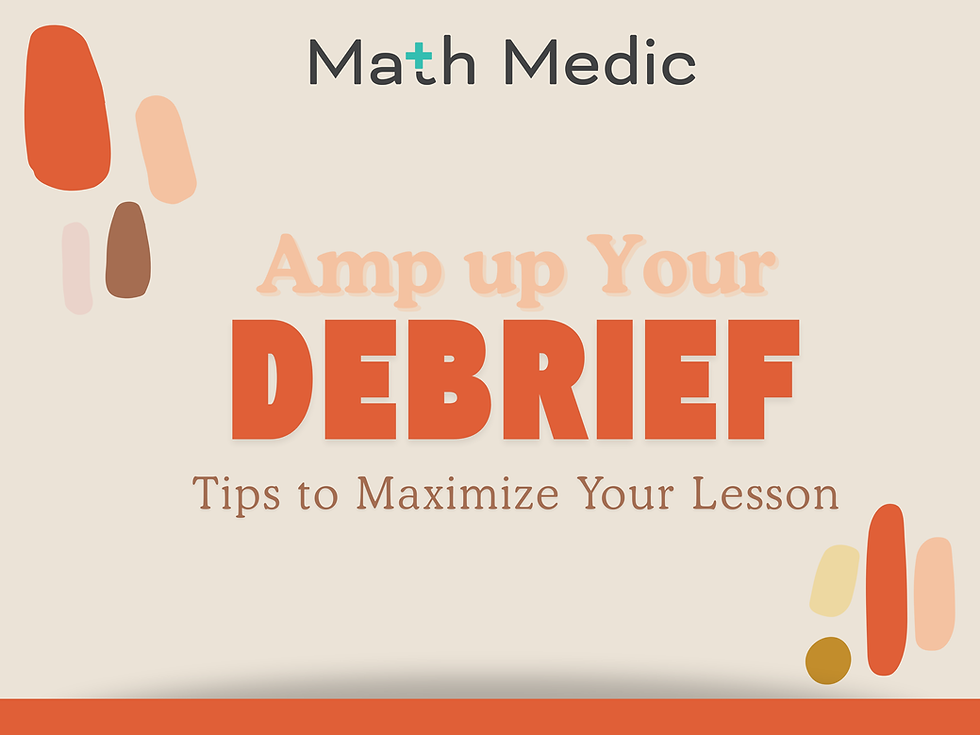Tips for Prepping to Teach Your Next Lesson
- Lindsey Gallas

- Mar 31, 2020
- 3 min read
Updated: Aug 15
A couple weeks ago, we got to hang out with some awesome math teachers from across the country at our EFFL 101 Online Workshop. During the workshop, we (Lindsey, Luke, and Sarah) modeled how to teach an EFFL lesson by teaching it as we would with our students. The participants worked in small groups, engaging with lesson activities as their students would. We heard over and over again that this process was very helpful for prepping to teach the lessons. We agree! It is, in fact, how we prepare to teach new lessons. Here are our tips for prepping to teach your next lesson.
Make Notes
We use this Lesson Planning Guide Word | pdf to help prepare for teaching a new lesson. We’ll break down the parts further in the coming sections, but the overall idea is that we wanted to create something that felt helpful while actually being sustainable to use daily (no administrator observation lesson plan templates here!). We focus on the most important and high impact parts of lesson planning. For us that includes:
Identifying the Main Idea
Anticipating Student Responses
Monitoring
Debrief
Go Through the Lesson Like a Student
We cannot emphasize enough how helpful this is. We know it takes extra time, but you must think about how your students will respond to the questions in the activities. Whenever we host a workshop, we always tell participants that they have to go into “Student Mode.” That means that they must work through an activity like a student would. They’ve got to think about what their students know and don’t know and answer questions accordingly. This is so important because it gives you a chance to anticipate student responses. What will students have a hard time with? What misconceptions might arise? As you think through the responses students may have, add them to your lesson planning guide.
After identifying possible student responses, we need to plan how we will react to them. This a part of the monitoring phase. As groups are working through an activity, you will be walking around the room and checking in with them. What types of things will you say? What clarifying questions can you ask to get them to explain their work? If there is a misconception, what guiding questions can you use to help them adjust their thinking or identify their error? Add these ideas to the Monitoring section of the lesson planning guide. In the lesson post found where you download your lesson, you will see a set of monitoring questions that we came up with for the lesson. Feel free to use these to inspire your own!
Use the Answer Key and Lesson Post to Plan Your Debrief
Every answer key posted on Math Medic is color coded. Anything that is written in blue is the student’s work, and anything written in red is added in by the teacher during the class debrief after the Activity. Use the answer key to identify what margin notes you will have students add to their papers during the debrief. Plan how you will verbally explain the ideas as you add it. If there are particular student responses that will make the debrief go better, look for those while you are checking in with groups. Identify students you will call on to share their thinking. Read both the "Experience First" and "Formalize Later" sections of the lesson post for guidance on what connections to make in the debrief and tips on how to select and sequence student responses. Make notes about all these things in the Debrief section.
After many years of teaching with EFFL, we have found the most important parts of prepping are anticipating student responses, planning guiding questions for monitoring, and preparing for the debrief. And the more we do this, the easier it gets. Take some time before your next lesson to try it out. Whether you use our lesson planning guide or make your own, what’s important is to write your ideas down somewhere. Trust me, next-year-you will thank you!



